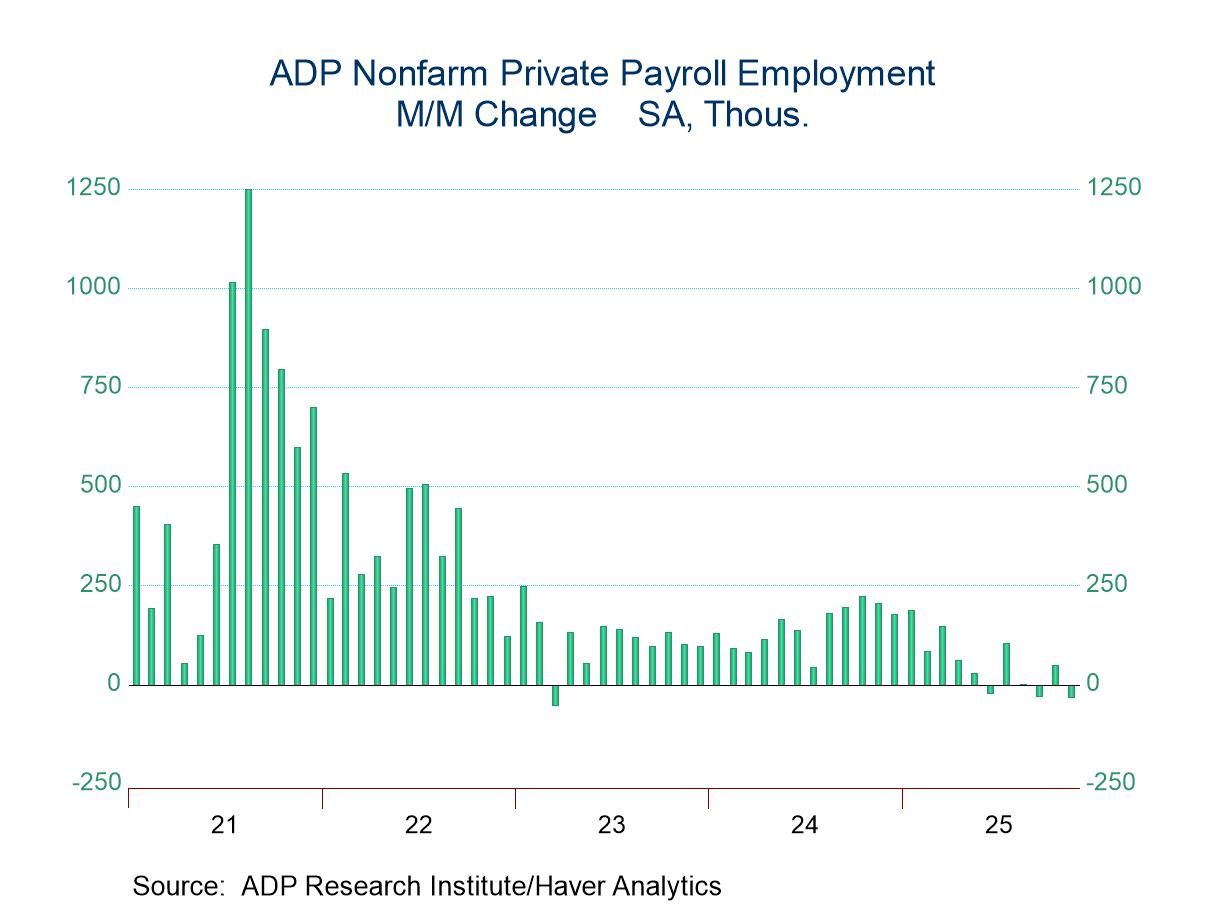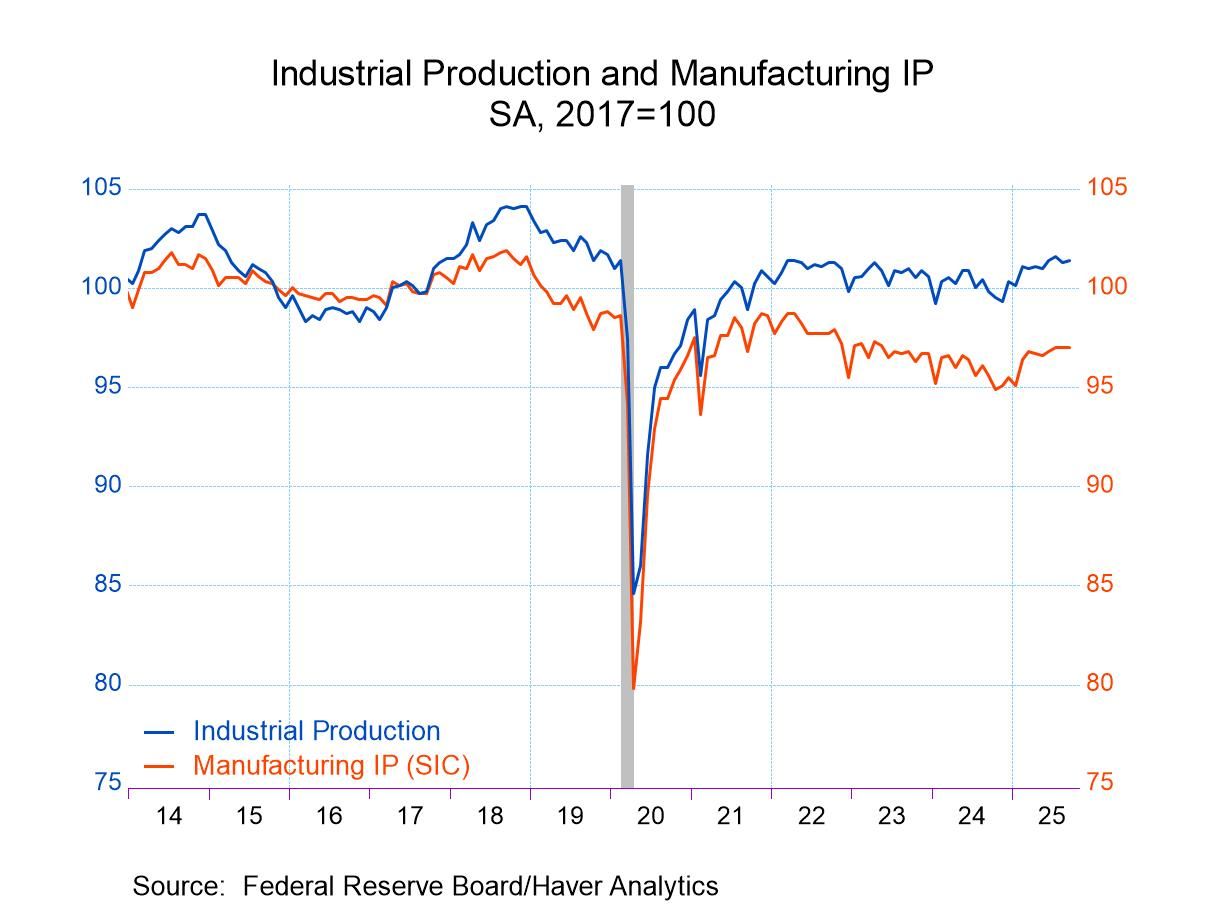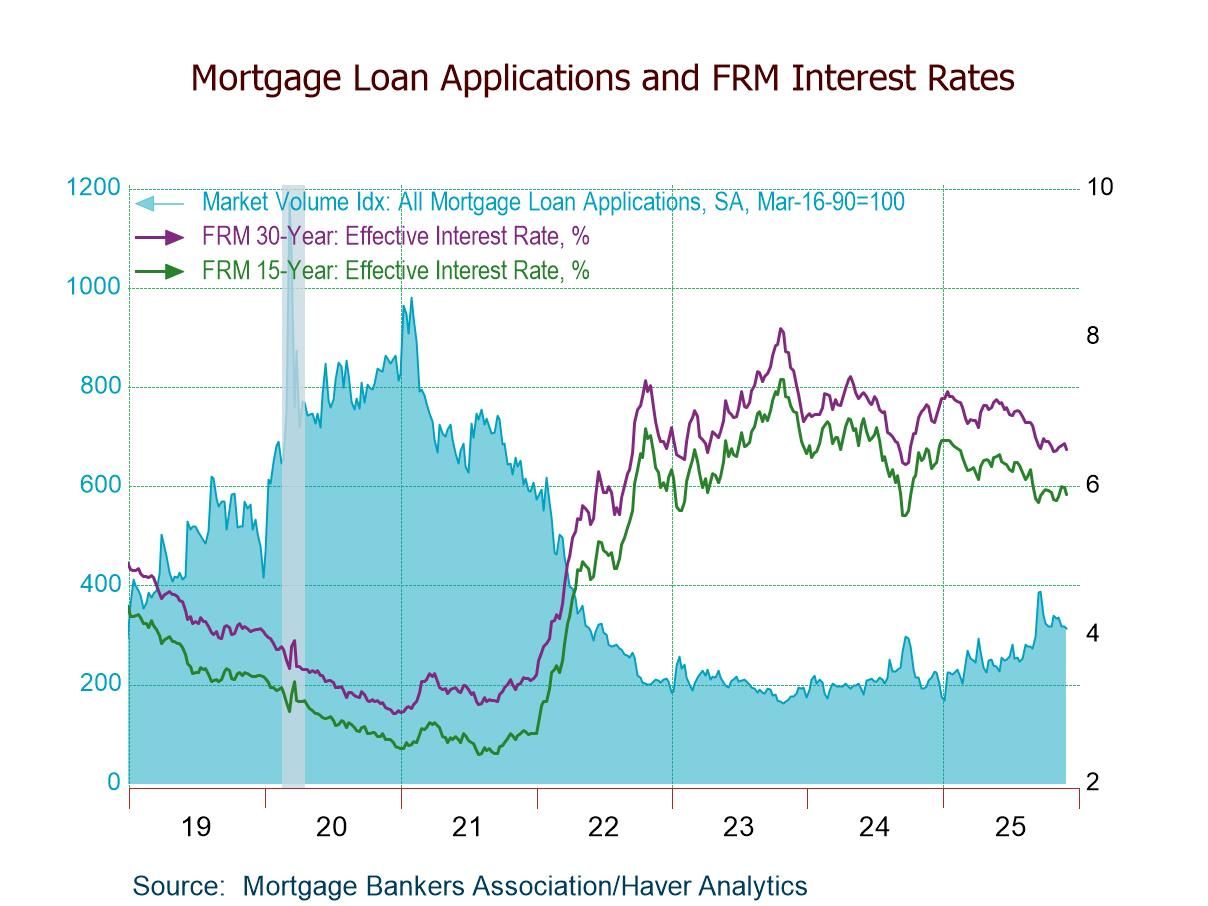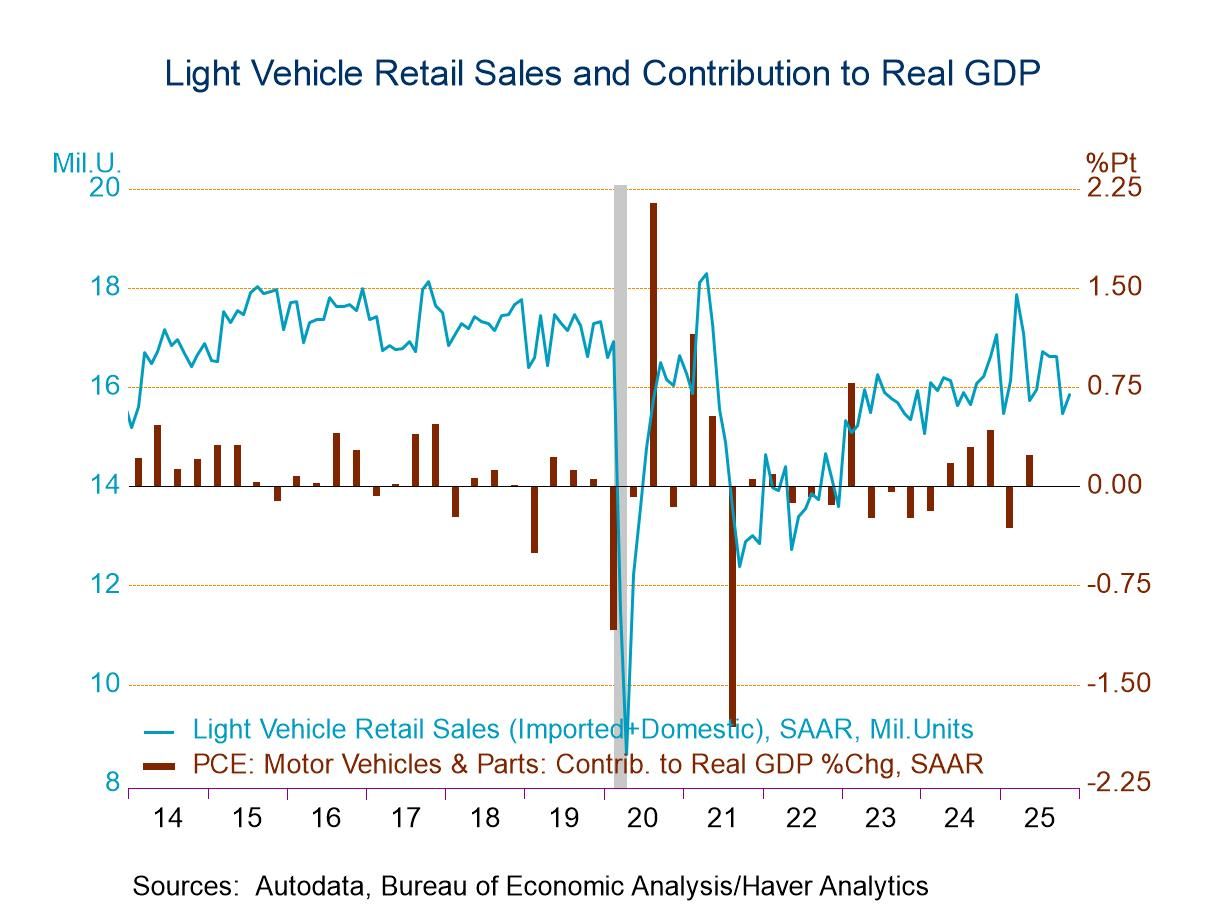U.S. Retail Sales Post Solid Increase in July; June Gain Revised Up
by:Tom Moeller
|in:Economy in Brief
Summary
- Strong vehicle sales pace the increase.
- Nonauto sales are mixed.
- Sales in the retail control group (used to estimate PCE) increase.
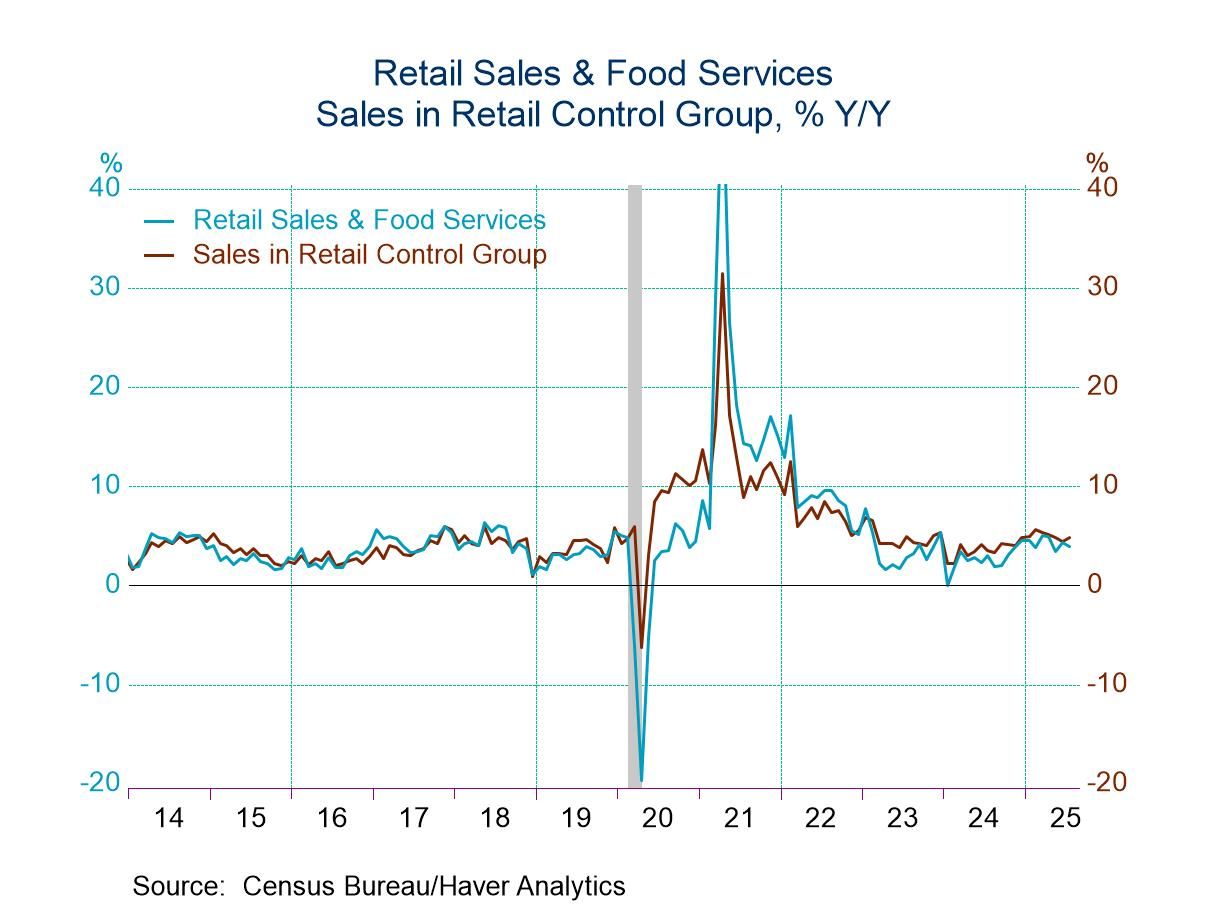

Consumers remain in a spending mood. Total retail sales increased 0.5% (3.9% y/y) during July after rising 0.9% in June, revised from 0.6%, and falling 0.8% in May, revised from down 0.9%. The overall rise matched expectations in the Action Economics Forecast Survey. Sales excluding autos rose an expected 0.3% last month (3.7% y/y) following a 0.8% June gain, revised from 0.5%, and a 0.1% dip during May, revised from -0.2%.
Sales in the retail control group, which excludes autos, building materials, gasoline and food services, rose 0.5% (4.8% y/y) last month after increasing 0.8% in June, revised from 0.5%, and 0.3% in May, revised from 0.2%. These sales are used in the construction of personal consumption expenditures in the NIPA accounts. These sales rose 3.9% (AR) last quarter following a 3.7% Q1 rise.
Light vehicle sales increased 1.6% (4.7% y/y) in July after rising 1.4% in June, following a 3.8% decline in May. This compares to a 7.6% (6.0% y/y) rise in unit sales of motor vehicles last month which followed declines in each of the prior three months. Gasoline service station sales eased 0.7% (-2.9% y/y) during July after a 0.6% rise during June. Gasoline prices fell 1.2% (-9.8% y/y) last month after holding steady in June. Sales of building materials & garden equipment declined 1.0% (-2.6% y/y) after a 1.3% rise during June.
Elsewhere, sales were mixed last month. Furniture & home furnishings sales increased 1.4% (5.1% y/y) after rising 0.1% in June. Nonstore retail sales rose 0.8% (8.0% y/y) after increasing 0.9% in June. Sporting goods & hobby shop sales increased 0.8% (2.3% y/y) following a 0.7% decline. Apparel store sales increased 0.7% (5.0% y/y) during July following a 1.1% gain. General merchandise store sales rose 0.4% (2.3% y/y) after they moved 0.5% higher in June, and department store sales improved 0.9% (-0.8% y/y) after falling 0.6% in June.
Working lower, miscellaneous store sales fell 1.7% (+10.6% y/y) during July after strengthening 2.7% in June. Electronics & appliance store sales eased 0.6% (-2.3% y/y) last month after two consecutive months of moderate decline.
In the nondiscretionary sales sector, food & beverage store sales rose 0.5% (2.5% y/y) last month following a 0.8% rise in June. Health & personal care store sales also rose 0.4% (5.6% y/y) last month after strengthening 1.0% in June.
Restaurant & drinking establishment sales fell 0.4% (+5.6% y/y) in July after rising 0.6% in June.
Retail sales data can be found in Haver’s USECON database. The expectations figures are from the Action Economic Forecast Survey in AS1REPNA.
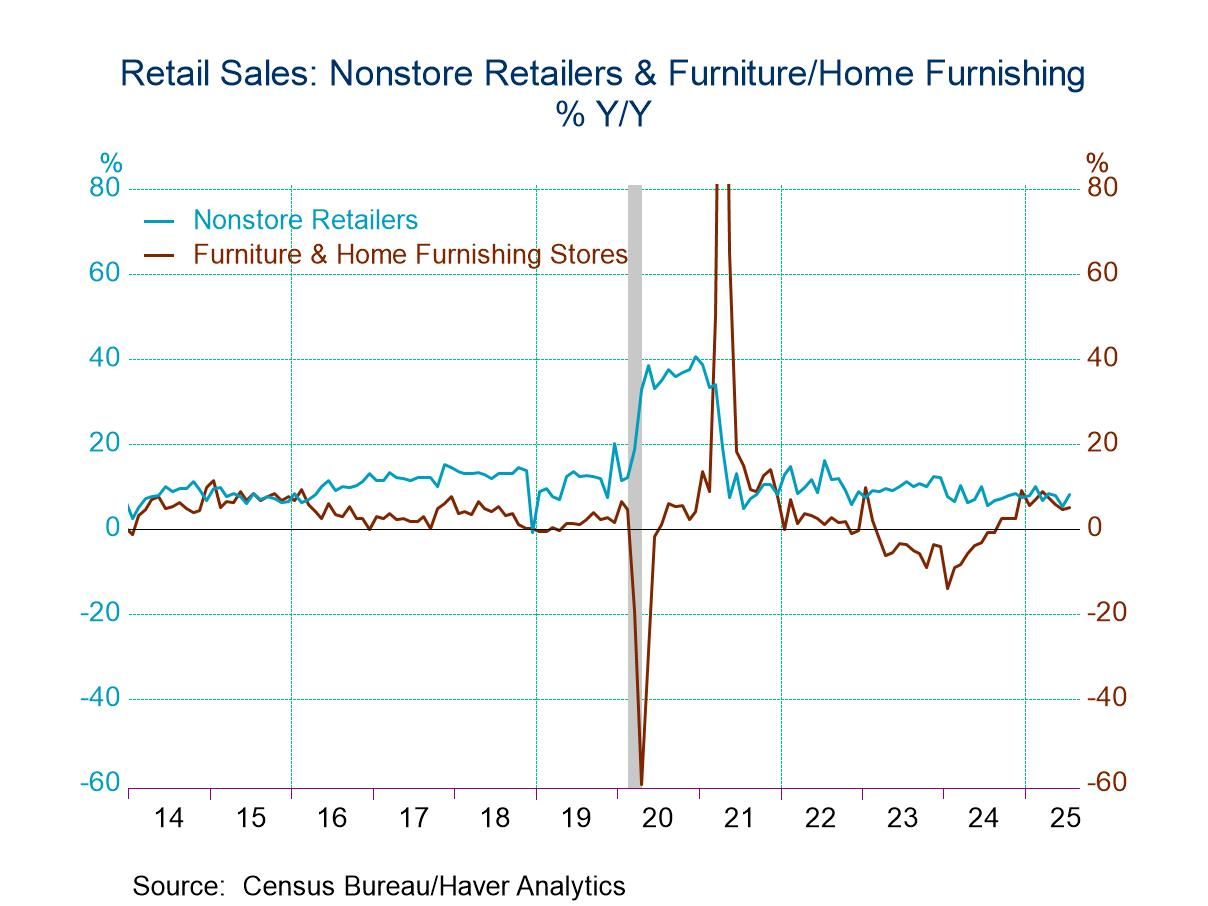

Tom Moeller
AuthorMore in Author Profile »Prior to joining Haver Analytics in 2000, Mr. Moeller worked as the Economist at Chancellor Capital Management from 1985 to 1999. There, he developed comprehensive economic forecasts and interpreted economic data for equity and fixed income portfolio managers. Also at Chancellor, Mr. Moeller worked as an equity analyst and was responsible for researching and rating companies in the economically sensitive automobile and housing industries for investment in Chancellor’s equity portfolio. Prior to joining Chancellor, Mr. Moeller was an Economist at Citibank from 1979 to 1984. He also analyzed pricing behavior in the metals industry for the Council on Wage and Price Stability in Washington, D.C. In 1999, Mr. Moeller received the award for most accurate forecast from the Forecasters' Club of New York. From 1990 to 1992 he was President of the New York Association for Business Economists. Mr. Moeller earned an M.B.A. in Finance from Fordham University, where he graduated in 1987. He holds a Bachelor of Arts in Economics from George Washington University.



